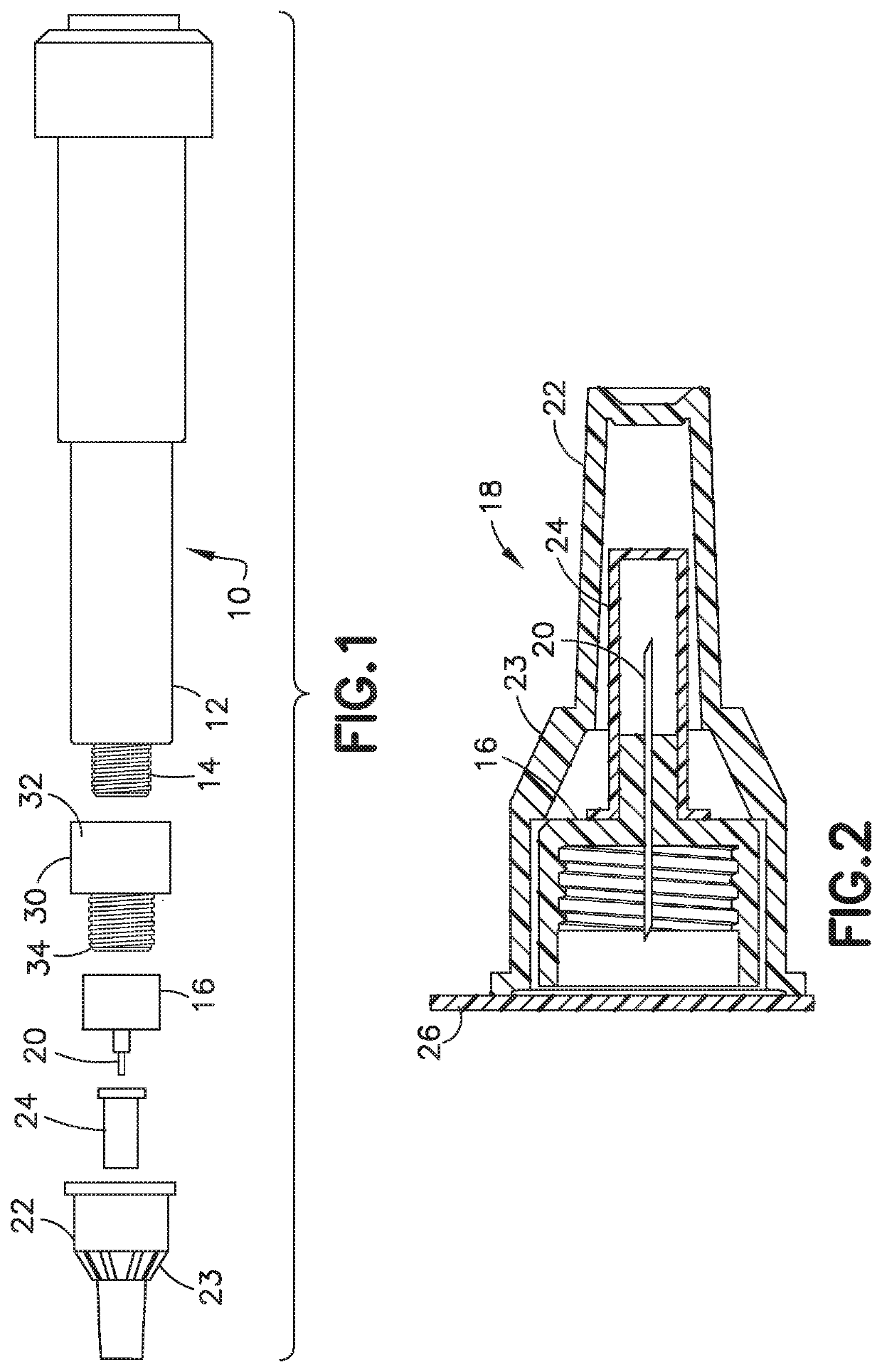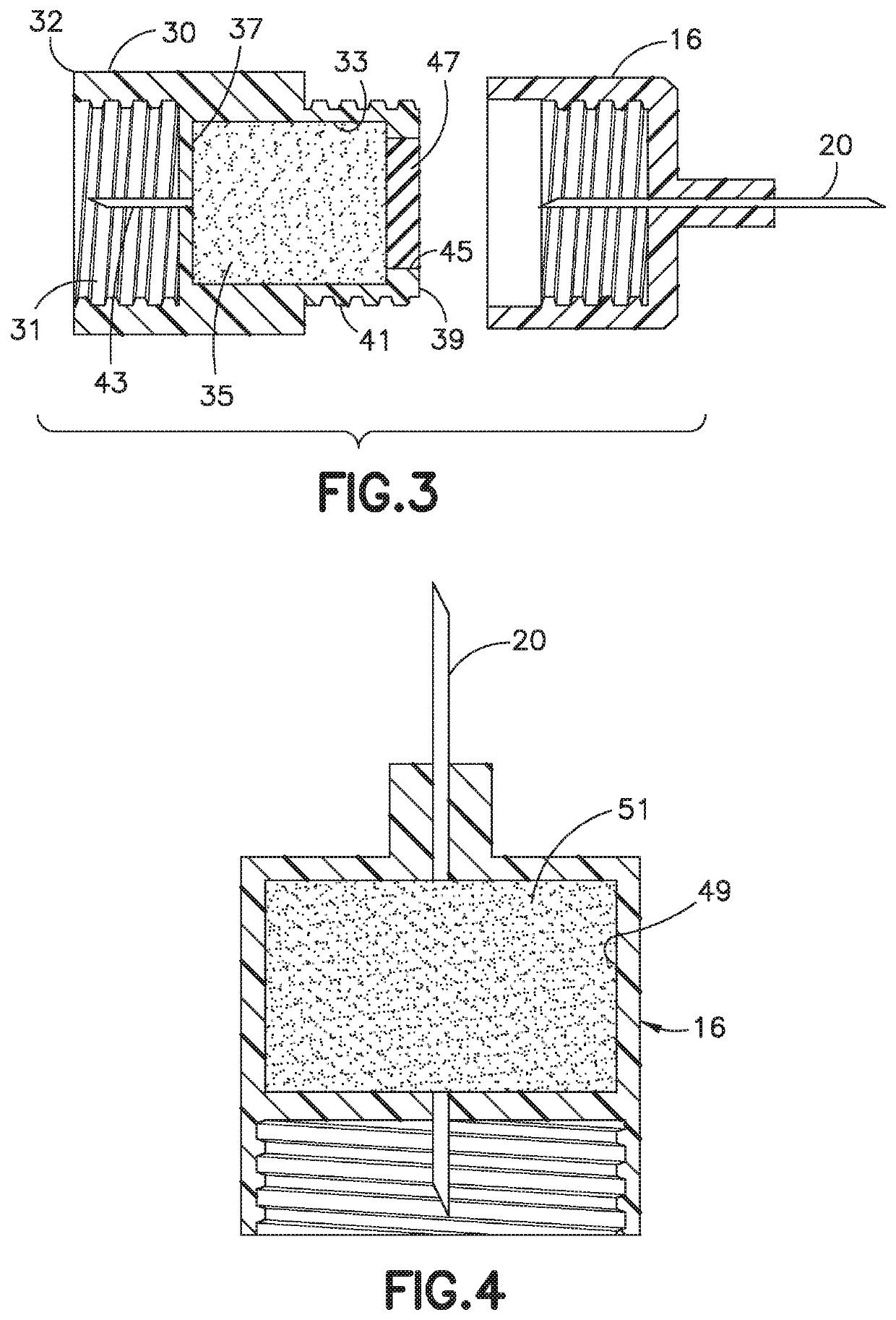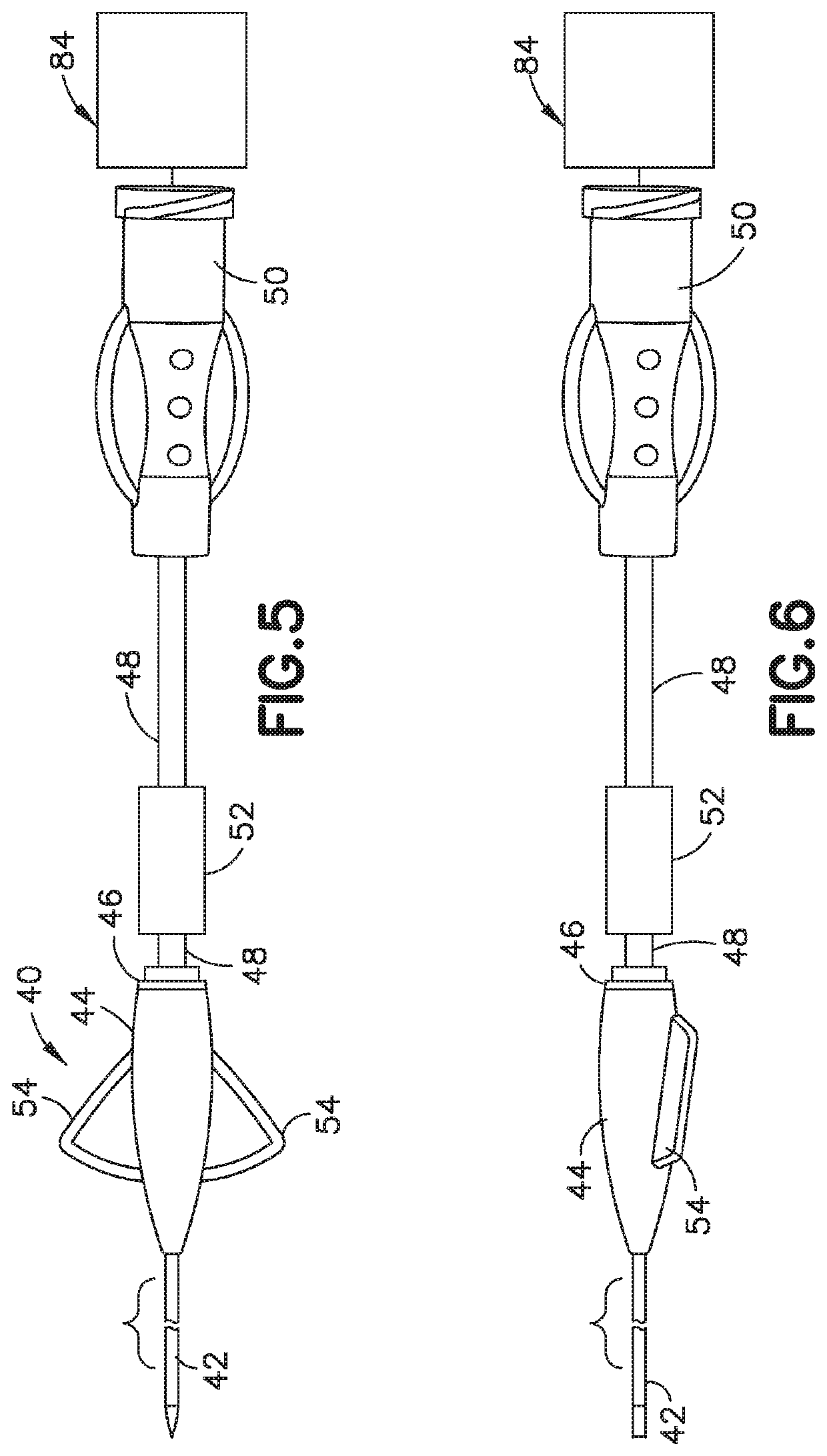Delivery device and adsorbent
a delivery device and adsorbent technology, applied in the direction of peptide/protein ingredients, separation processes, filtration separation, etc., can solve the problems of instability, side effects, scarring, lipohypertrophy, etc., to prolong the shelf life of insulin, reduce irritation, and reduce the effect of insulin effectiveness or potency
- Summary
- Abstract
- Description
- Claims
- Application Information
AI Technical Summary
Benefits of technology
Problems solved by technology
Method used
Image
Examples
example 1
[0077]The effectiveness of the activated charcoal for removing phenol and m-cresol from insulin formulations was tested using a known infusion formulation. The insulin formulation obtained under the tradename Humalog containing m-cresol as a stabilizer was passed through a bed of 15 mg of acid-treated activated charcoal for a period of 7 days. The acid-treated activated charcoal was obtained under the tradename CN5-20 from Cabot Corporation. The insulin formulation was passed through the activated charcoal at a rate corresponding to a basal flow delivery of insulin and a bolus flow delivery of insulin. As shown in the table of FIG. 12 representing the basal flow, the activated charcoal was effective in removing about 95% by weight of m-cresol through day 4 and about 60% by weight through day 7. The insulin potency was maintained at greater than 93% through day 7. The bolus flow as shown in the table of FIG. 12 shows about 60% m-cresol removed after day 7, which corresponds to about ...
example 2
[0078]Example 2 was performed in a similar manner as in Example 1 except for the use of 2.5 mg of the acid-treated activated charcoal with a similar insulin volume. As shown in the basal flow of the table in FIG. 13, the amount of the activated charcoal was less effective in removing m-cresol from the insulin formulation at the same flow rates and volumes. The table of FIG. 13 shows that after day 7 the activated charcoal was effective in removing about 80% by weight of the m-cresol present in the insulin. The table of FIG. 10 shows the effectiveness of the removal of m-cresol for the bolus flow. As shown in FIG. 14, the amount of the activated charcoal removed about 25% by weight of the m-cresol after day 7. The results of Example 1 and Example 2 demonstrate the correlation between the volume of the insulin formulation, the amount of the activated charcoal, and the length of time of contact of insulin with the activated charcoal, and the effective removal of the m-cresol from the i...
example 3
[0079]In this example, the insulin formulation was obtained under the tradename Novolog and tested with 15 mg of acid-treated activated charcoal by the tradename CN5-20. The activated charcoal was shown to effectively remover m-cresol and phenol from the insulin formulation as shown in the table in FIG. 15 without reducing the potency of the insulin.
[0080]The activated charcoal is found to be effective in removing phenol and m-cresol from insulin formulations immediately before introducing to the patient. The activated charcoal is effective in removing the phenol and m-cresol from insulin formulations at typical flow rates of infusion devices that provide a controlled and / or continuous insulin delivery without loss of insulin potency. The reduced content of the phenol and m-cresol from the insulin formulation reduces the irritation and inflammation at the injection site and improves adsorption of insulin at the injection site over a prolonged period of time.
PUM
| Property | Measurement | Unit |
|---|---|---|
| pH | aaaaa | aaaaa |
| residence time | aaaaa | aaaaa |
| contact time | aaaaa | aaaaa |
Abstract
Description
Claims
Application Information
 Login to View More
Login to View More - R&D
- Intellectual Property
- Life Sciences
- Materials
- Tech Scout
- Unparalleled Data Quality
- Higher Quality Content
- 60% Fewer Hallucinations
Browse by: Latest US Patents, China's latest patents, Technical Efficacy Thesaurus, Application Domain, Technology Topic, Popular Technical Reports.
© 2025 PatSnap. All rights reserved.Legal|Privacy policy|Modern Slavery Act Transparency Statement|Sitemap|About US| Contact US: help@patsnap.com



